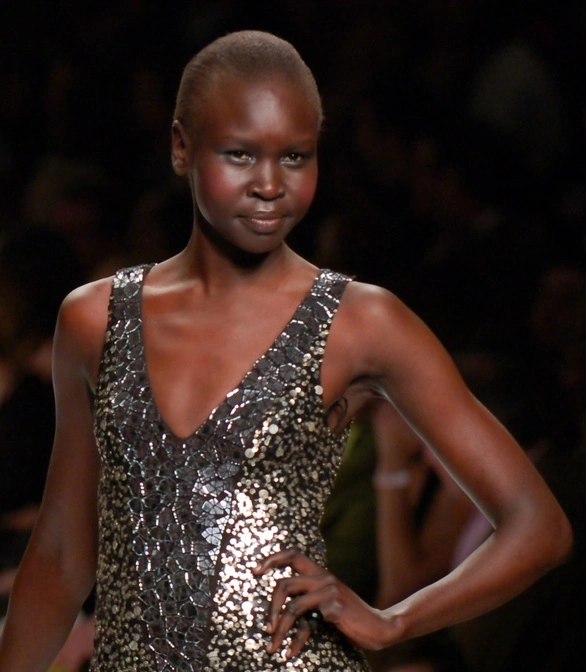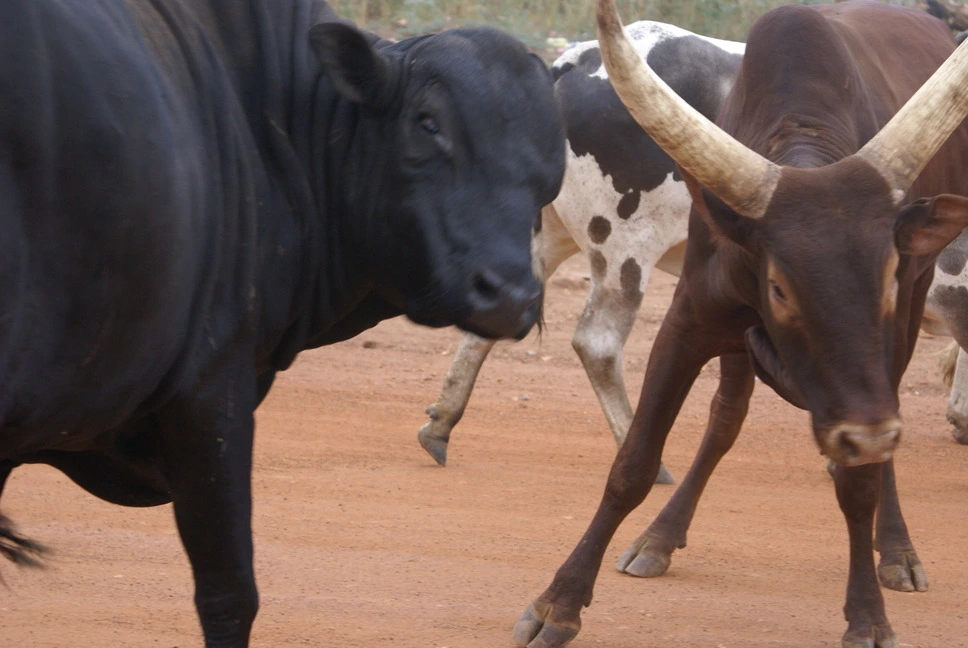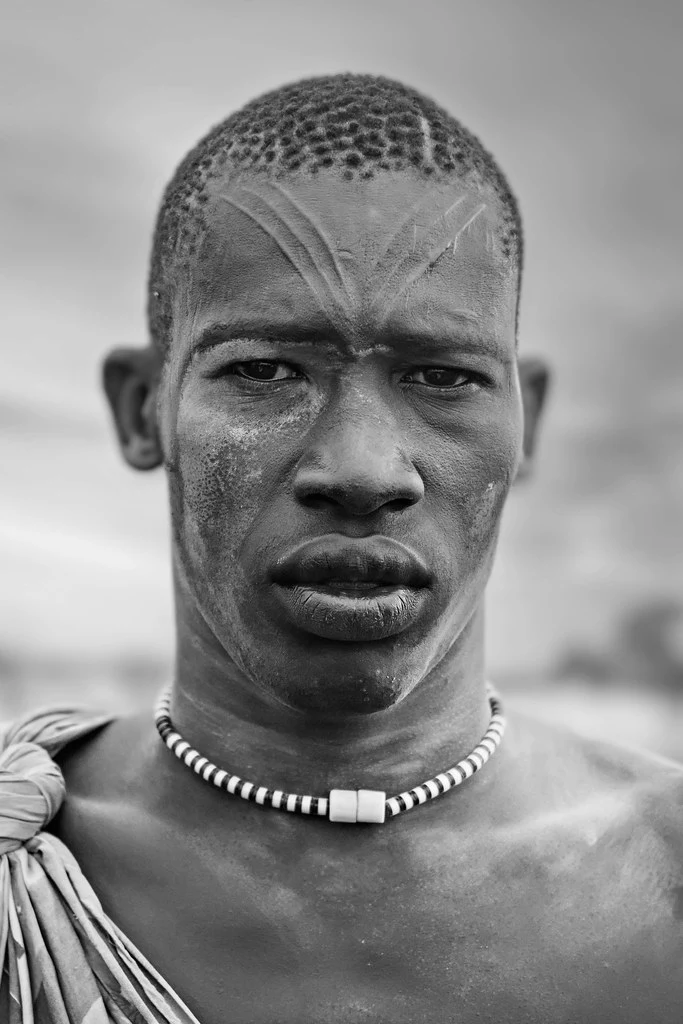The Dinka are a Nilotic group from South Sudan who live along the Nile. The land of Dinka is located about 500 miles south of the capital city of Sudan, Khartoum, in Bahr al-Ghazal province.
The Dinka tribe was formed in 3000 BC and they settled on an extensive swampy area in the Sahara desert. The Dinka constitute 12 percent of the South Sudan population. They are around 4.5 million people.
The Dinka people are famous for their height. Dinka men are 5ft and 11.9 inches tall while their women are 5 feet and11.5 inches. Dinka people are the tallest in Africa and are among the tallest people in the world.
The love for cattle is one of the fascinating facts about the Dinka people. The Dinka consist of many independent groups. Interestingly, they don’t know that they are called Dinka. In fact, they identify themselves as Jieng.
- They Have An Incredibly Beautiful Dark Skin Tone

The Dinka possess a beautiful dark skin tone because they live closer to the equator and the exposure to the sun. The dark skin complexion protects them from the equatorial sun. Their tall figure also helps them in dispensing heat adequately.
Dinka people apply ash made from dung fire on their bodies to beautify and protect themselves from the scorching sun and the ash also acts as a mosquito repellant. The Dinka cut their bodies in decorative designs and remove their teeth to enhance their beauty.
- There Are Several Subgroups That Make The Dinka People
Instead of having a single unified governmental power, the Dinka are made up of numerous interconnected clans that are governed by chiefs whom they call “master of the fishing spear’. These chiefs are the ones who perform rituals during ceremonies.
The sub groups of the Dinka include the Agar, Bor, Rek, Twic and Aliab. They have a large territory and are widespread in the White Nile separated by the Rivers Bor, Aweil, and Renk.
There is the distribution of labor among the Dinka people. Women do most of the farm work although men help them in preparing the land. The boys take care of the sheep and goats while the men take care of the cattle.
- Nudity Is Not Taboo To The Dinka
It’s not taboo to walk naked in the Dinka tribe. Nudity among girls of the Dinka is regarded as a sign of innocence. The men also walk naked with only beads around their necks and wrists.
Married women usually wear skirts made from goatskin. They value personal grooming and decorations. Women are not allowed to keep their hair long. They shave their eyebrows and apply oil on their bodies that is made from boiled butter.
- Cattle Play A Major Role In The Dinka Way Of Life

The Dinka have many tales that place a high significance on cows. They love cattle because they represent prosperity and status. Cows form a large percentage of their social, religious, and economic way of life.
Interestingly, the Dinka have more than 400 words that describe their cows in color, movement, disease, variety, and form. They also use cows as bride price during marriage ceremonies.
When the herdsmen have come of age, their fathers reward them with a bull. The herdsman’s name is replaced with the nickname of the bull and at that point, they identify themselves with that bull to a point of imitating and behaving like the animal. The Dinka’s diet revolves around dairy and meat. Apart from slaughtering cows for food, they also appease their ancestors, spirits, and their god with the sacrifice of the cattle.
- The Dinka Scar Their Foreheads During Initiation

The Dinka have an amazing way of conducting their initiation ceremony. The boys are imitated when they attain adolescent age. They transit from boys to men by a special scarring ceremony. The boys are scarred in ‘V’ shape on their foreheads by a sorcerer. Some sub-tribes scar their boys in six horizontal lines. During this ceremony, the boy is not supposed to show any form of weakness which may bring dishonor.
According to the tradition of the Dinka, men should marry at 30 years old while women marry between the ages of 17 and 20 years old. It’s taboo to be pregnant out of wedlock. The men marry outside their clans to promote cohesion among the group. Polygamy is a common practice by the Dinka people whereby men can marry between fifty and one hundred wives. The wives must join hands in sharing the household duties but taking care of children is each wife’s responsibility.
- They Have A Traditional Corset Worn By Both Men And Women
Dinka men wear beaded corsets which serve as a sign of their wealth and age with elevated back projection. The corsets are called Malual. They import the materials that they use to make these corsets.
Corsets with black and red are worn by men between the ages of fifteen and twenty-five years old, while twenty-five to thirty-year-olds wear corsets of pink and purple. Men over 30 years wear yellow-beaded corsets.
Women on the other hand also wear corsets which they call Alual which are made in bodice style to cover their breasts. These corsets are decorated with cowrie shells symbolizing fertility. Different patterns show the wealth status of the girl and the amount of the bride price that will be expected from the lucky suitor.
The Dinka also have other amazing customs. They live in mud-walled circular houses with conical-shaped roofs. It’s only women and children who are allowed to sleep in the house while men sleep in cowsheds.
Girls are taught how to cook while boys are not. They cook their food in pots outside on an open fire. They basically cook porridge from millet which they eat with vegetables and milk. They also eat peanuts, beans, fish, rice, and tomatoes.
The Dinka from South Sudan are very hospitable people. The modern Dinka have built permanent homes along the Nile River a higher ground away from flood water from the Nile.
